I recently got a good deal on a condition-unknown Kenwood TK-7160H radio. This is a nice 50W VHF high-band commercial transceiver, and I figured that even if it was a little sick, it could probably be used to add support to CHIRP. Once I had a chance to check it out, I discovered that it was almost entirely deaf — but only when it was in wide (5kHz deviation) mode. In narrow (2.5kHz deviation) mode, it was fine. Everything else about the thing was on point.
I cracked the case and followed the service manual’s description of the signal path to the IF filters. They’re on the bottom side of the board as installed in the chassis, which means it’s hard to examine them directly, but their terminals are sticking up, ripe for the probing.
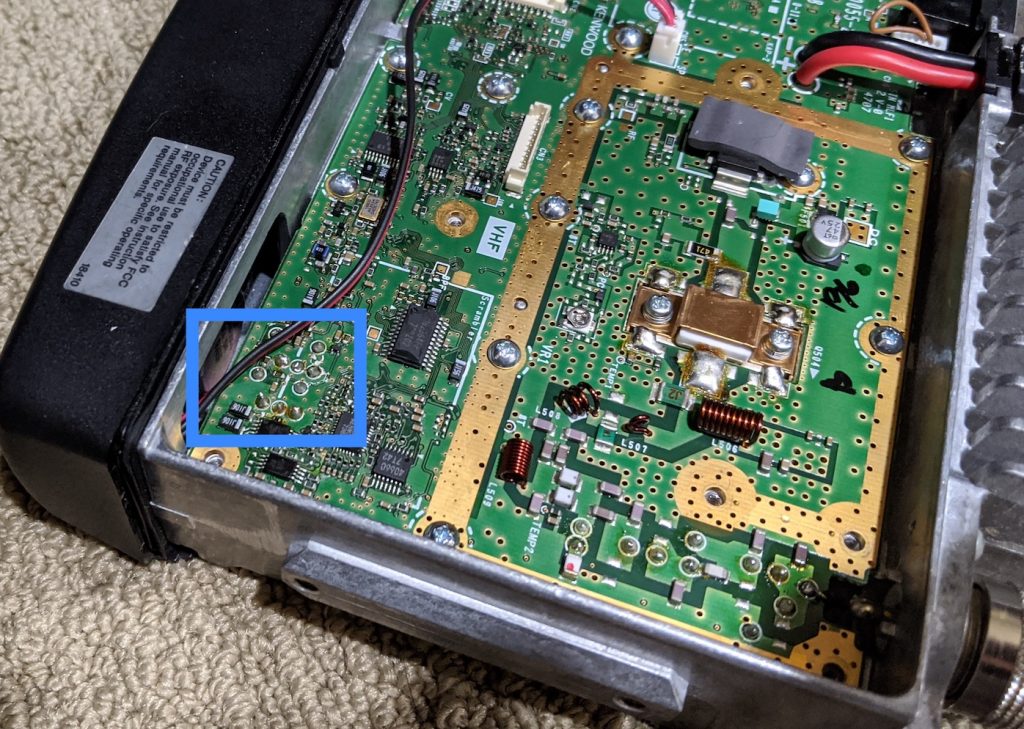
Sure enough, I could scope the IF signal on either side of the narrow filter, but one side of the wide filter it was clamped hard to ground. If you are looking at the radio top-down, the wide filter is the one closest to the edge of the board:
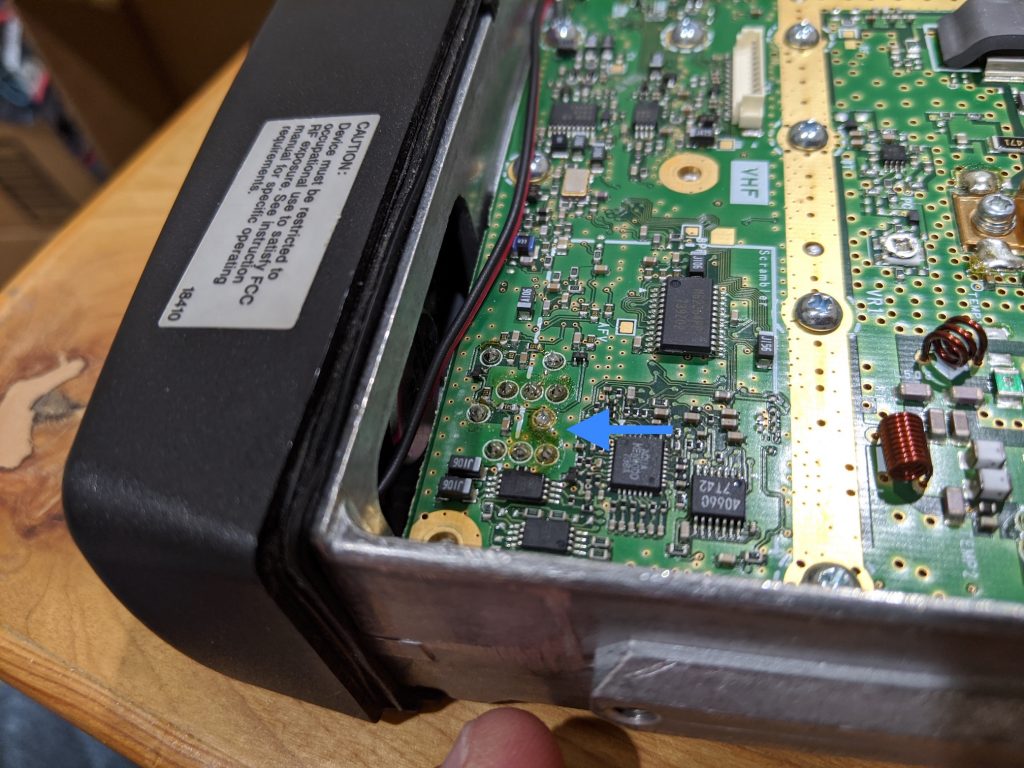
The filters each have five pins: three closely-spaced on one side which are ground, and then two on the other side far apart. The two two far-apart ones are the filter input/output pins.
I also noticed that there was some buildup on the otherwise-clean board right around the filters. This looked like crispy flux residue, but also could have been some sort of corrosion. If it was flux, it seemed likely that someone had already been in here to replace filters, potentially only the narrow one since it was healthy?
It is well-known that some radios have issues with their ceramic IF filters. Notably, Kenwood had a rash of much-too-early failures on some of the TM-D710 and TM-V71 radios which had some people worried about long-term longevity. It has been theorized that this problem is due to electromigration due to improper buffering of the filters from the DC bias used in the narrow/wide filter selection logic. Many radio manufacturers do this across many of their models and widespread deaths of all those don’t seem common enough for this to be some major oversight by the world’s leading radio manufacturers, at least in my opinion. Other theories are that Kenwood specifically got a bad batch of Toko filters within a certain manufacturing window, and these are the ones that are dying early.
Other pictures and video I have seen of this problem revealed the affected filters showing external signs of “green death” leaking out of the filter enclosure, slowly working its way out due to increased pressure. To get a look at the filters themselves I had to remove the board, which required unsoldering the antenna connector at the back:
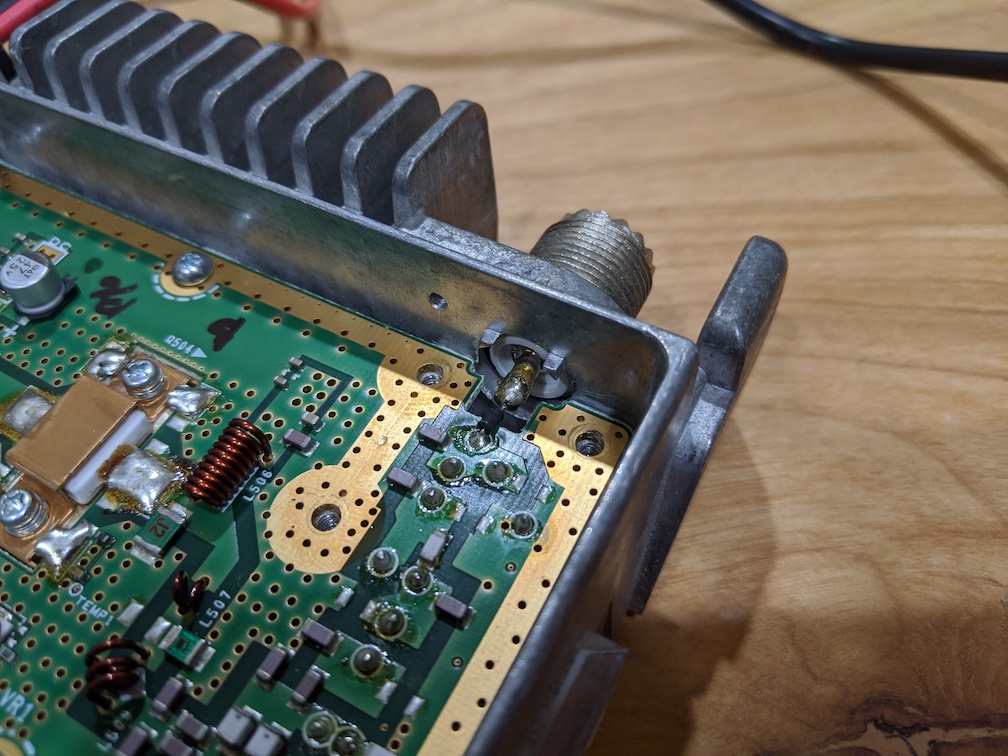
Once that was free, the rest of the screws will release the board from the chassis. I flipped it over and immediately noticed a few things. First, the filters were different brands, indicating that likely one had been swapped out and not the other. Second, the wide one was Toko brand. Third, the wide filter was covered in white fuzz, similar to other pictures I had seen of this problem, but not the narrow one.
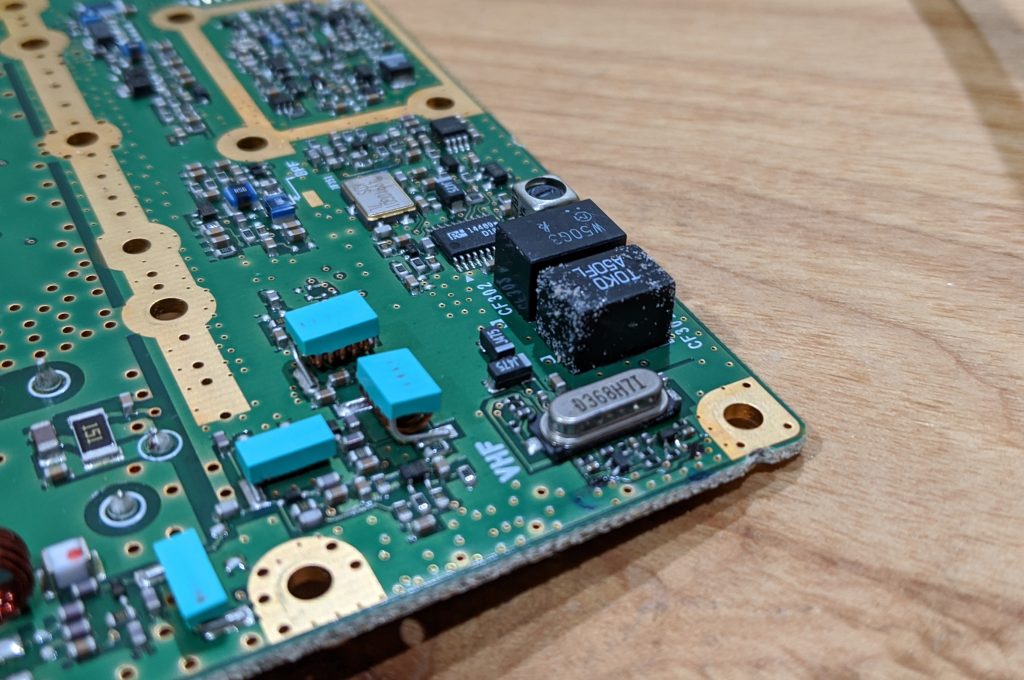
Since this radio is intended for Part 90 use, it is likely that someone would have repaired/replaced just the narrow filter, as wide mode would really only be useful to a ham these days. Filters are cheap, about $5 each, and they’re fairly common across these sorts of radios. I ordered three of each and figured I’d swap out the narrow filter in this guy too, since I was in there, just in case. I opted not to do the bypass cap hack job to remove the DC bias. Kenwood’s part numbers for the filters are in the service manual:
- Wide: L72-0993-05
- Narrow: L72-0999-05
Here’s the wide filter desoldered, and the narrow one came out right after it:
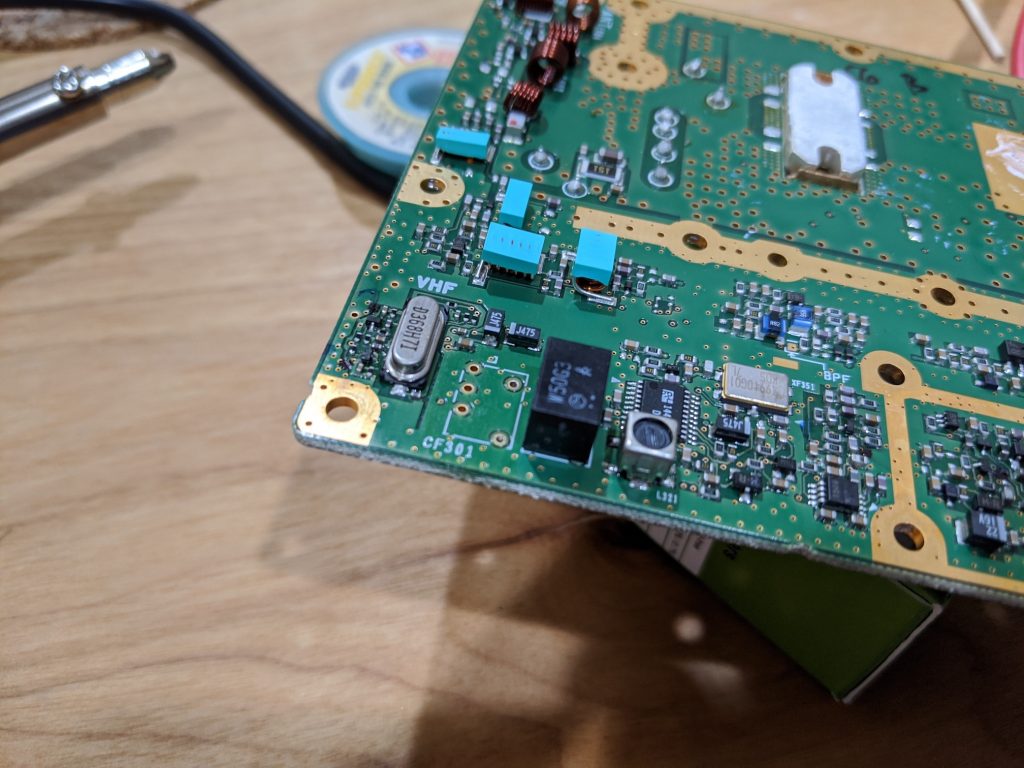
After the board was cleaned up, both new filters went back into their spots:
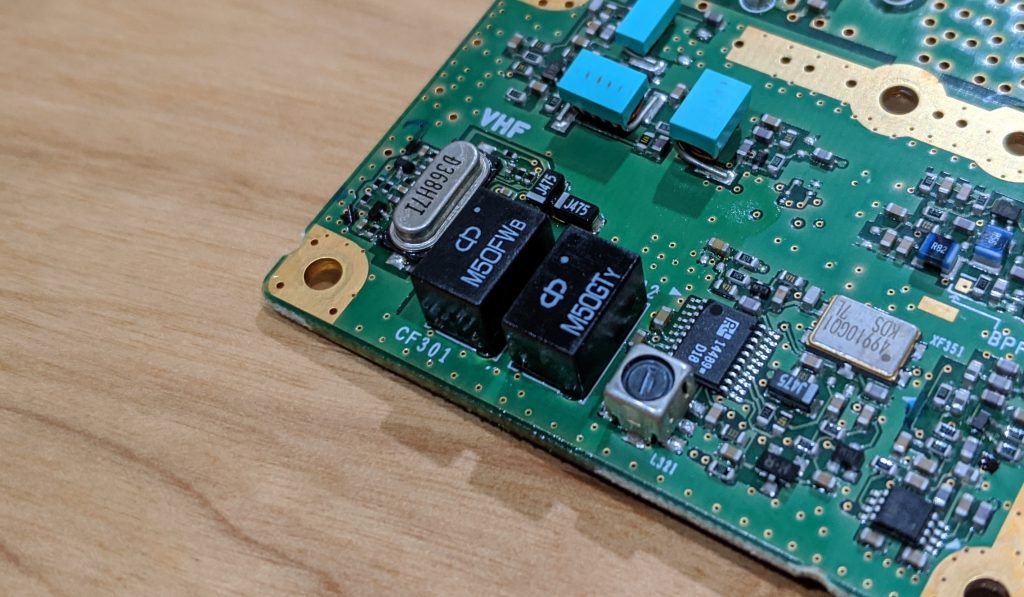
The hot elements are heat sinked to the chassis underneath and mated with thermal paste. I added a little more to each landing before I reassembled it to make sure nothing was thermally compromised by the dis- and re-assembly. Don’t forget to re-solder the antenna connection to the board once it is screwed back down.
After it was all back together, I checked on the service monitor and sure enough, the wide mode was working properly again. Sensitive down well below -120dBm. Before the fix, at 0dBm, I could only barely hear the modulation through the static when I held the squelch open.
There isn’t a lot of information out there (at least that I could find) about applying these filter fixes to the commercial line of radios. Most of those probably get fixed in a shop, where radios from the amateur line are more likely to get fixed by the owner. The same theory here should apply for the UHF variant (TK-7180) as well as similar models of TK-7162, TK-8162, TK-7102, TK-7108, TK-8102, TK-8108, TK-7180, and TK-8180.
